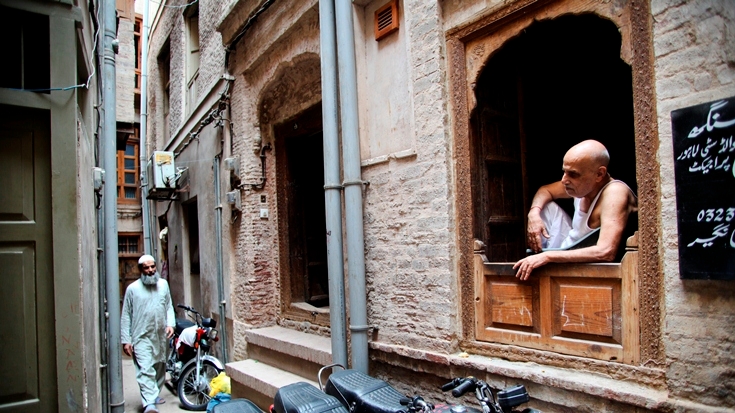Challenges
Pakistan faces significant economic, governance and security challenges to achieve durable development outcomes. The persistence of conflict in the border areas and security challenges throughout the country is a reality that affects all aspects of life in Pakistan and impedes development. A range of governance and business environment indicators suggest that deep improvements in governance are needed to unleash Pakistan's growth potential.
Political: Pakistan has faced significant political, economic and constitutional challenges over the past five years. These include continuing pressures of coalition politics, militancy crises, sectarian tensions and consequent violence in many parts of Pakistan, recurring natural disasters like the 2010 and 2011 floods, implementation challenges of devolution of increasing responsibilities to the provinces, and a difficult economic situation. In May 2013 Pakistan completed its first democratic transition of one civil government to another. The country marked a record high 60% voter turnout. Local government elections have been held in Balochistan and are awaited to be held in the rest of the country. While security related threats have been heightened in the last few months, democratic process has gained stability in Pakistan.
Main Economic and Social Challenges: Pakistan continued to struggle to regain macroeconomic stability since the global crisis of 2007/08. Following these crises, and hit by the floods and political and security concerns, real economic growth over the last four years has averaged 3.6% – about half the rate of early 2000s. Supported by strong workers’ remittances and high level of public spending, economic growth continues to be driven by private consumption. Investment remained on a declining trend and the share of private investment in Gross Domestic Product (GDP) has dropped to 10.3% in 2012/13 from 14.5% in 2006/07. Fiscal situation has remained weak as poor revenue mobilization and high government spending, especially on untargeted subsides, has contributed to large fiscal deficits, which were financed mainly through borrowing from the banking system due to paucity in availability of external financing for the budget. High consumption, coupled with supply side bottlenecks, rising energy prices and sharp depreciation in exchange rate has led to sustained inflationary pressures. However, after remaining at very high levels, inflation has started to decline and in 2012/13 reached 7.4%, down from 17.0% in 2008/09. Despite the lower growth and high inflation, Pakistan has shown remarkable progress in reducing poverty. Preliminary unofficial estimates show headcount poverty at 13.6% in 2010/11, a sharp drop from 34.7% in 2001/02. To improve country’s economic fundamentals, the elected government has initiated a program of economic reforms, which is supported by the International Monetary Fund (IMF) and other multilateral and bilateral donors. The program is expected to stabilize the economy and promote economic recovery. Significant improvement in economic indicators is projected in the first year of implementation, and economic growth reaching about 4% with some recovery in private investment.
Accelerating progress in human development remains the key underpinning for sustained economic gains. The Net Enrollment Rates in education have been increasing in Pakistan but still lag behind other South Asia countries. Infant and under five mortality rates represent a similar story. Gender disparities persist in education, health and all economic sectors. Pakistan has one of the lowest female labor force participation rates in the region. Nutrition also remains a significant cross-cutting challenge, as 44% of children under five are stunted. Despite the worrying state of education and health, especially amongst the poor, the resource allocation as a percentage of the GDP remained low. Pakistan is ranked as one of the lowest spenders on education and health in the region (at about 2% of GDP). At the current rate of progress, it will be difficult for Pakistan to meet the Millennium Development Goal (MDG) targets on health and education by 2015.
Poverty gains of over the past decade have been impressive but may be difficult to sustain. Pakistan saw a decline in poverty trends, with the poverty rate falling from 34.5% in 2001/02 to an estimated 17.2% in 2007/08. Over the past few years there have been signs that poverty levels may have further decreased, despite the downturn in the economy, floods and inflation. These gains might have been supported primarily through remittances, faster than expected recovery of the agricultural output and exports following the floods, and broad economic growth. While Pakistan’s overall level of inequality remains steady and relatively low compared to other developing countries, some of the volatile border regions and some rural areas within the other provinces have a higher than average level of poverty.
Over the past couple of years, greater decision-making authority has been assigned to provincial governments. The Eighteenth Constitutional Amendment has devolved a number of key functions to the provinces. In total, functions in 17 federal ministries have been devolved, including Agriculture, Education, Environment, and Health. In addition a greater share of revenues has been passed to the provinces through the National Finance Commission Award (NFC) in order to enable them to perform these functions. As expected, the devolution has posed institutional and capacity challenges at the provincial level, and meeting these challenges will require concerted efforts to enhance sub-national capacity and institutional development, which varies across provinces.
Solution
The Bank’s support is focused on, inter alia, helping the country maintain economic stability by addressing critical long-term constraints to growth (power, irrigation, roads, ports); assisting the government to put in place a safety nets system that adequately and effectively protect the poor from economic shocks; and supporting education reform programs to increase school participation, reduce gender and rural-urban disparities, and improve quality and governance. The Bank is also helping Pakistan cope with the consequences of conflict while reducing the prospects of future conflicts through its engagement in the country’s border areas.


